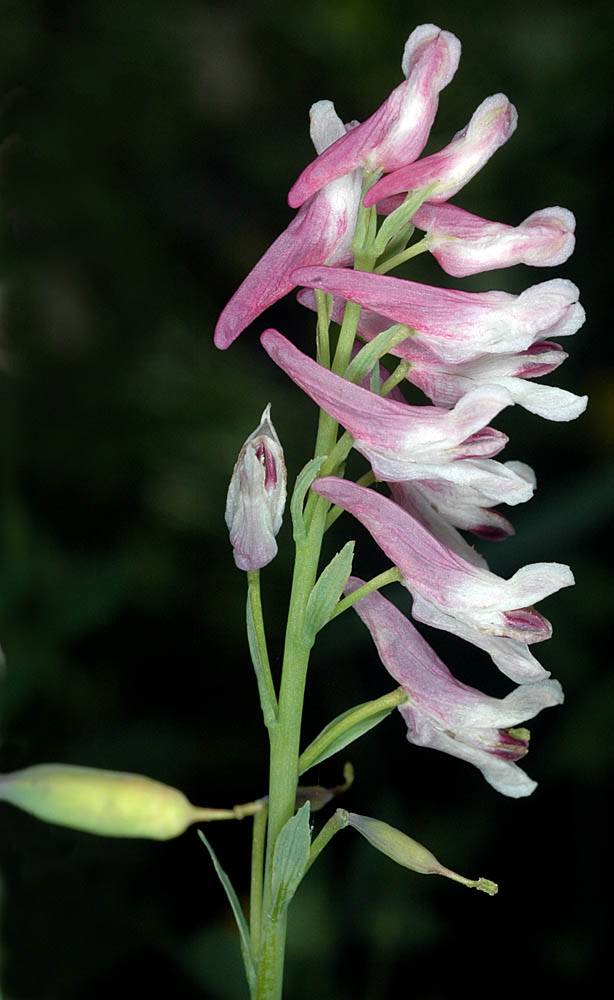
[This taxon will be assessed for treatment in volume 3 of Flora of Oregon, which is not yet published.]
as described under Corydalis aquae-gelidae
Plants perennial, subaquatic to aquatic, from relatively deep roots. Stems 1-several, hollow, 3-11 dm, succulent. Leaves several, compound, to 6 dm; blade with 4-6 orders of leaflets and lobes; abaxial surface glaucous; ultimate lobes of proximal cauline leaves elliptic to ovate, 5-12(-15) × 1.5-6 mm. Inflorescences racemose or paniculate, 20-70-flowered; bracts inconspicuous, proximal to 10 mm, distal reduced. Flowers ascending or spreading; sepals rounded and irregularly dentate to attenuate-lanceolate with wide base; petals pale to deep pink or lavender, red or purple at tips of inner petals; spurred petal (10-)12-20 mm, spur 9-11 mm, crest conspicuous, wrinkled, marginal wing absent or inconspicuous, unspurred outer petal 10-15 mm; inner petals 7-12 mm, claw 3-5 mm; nectariferous spur 1/2-3/4 length of petal spur; style ca. 3 mm; stigma roughly rectangular, with 8 papillae. Capsules reflexed, narrowly ellipsoid, 8-15 × ca. 3-5 mm. Seeds ca. 2 mm diam.Flowering early-late summer. In and along streams and springs, and in moist shady woods; 30-1100 m; Oreg., Wash.Because of morphologic intergradation with Corydalis caseana subsp. cusickii , G. B. Ownbey (pers. comm.) does not consider Corydalis aqua-gelidae a distinct species; he believes that it probably should be treated as a subspecies of C . caseana .